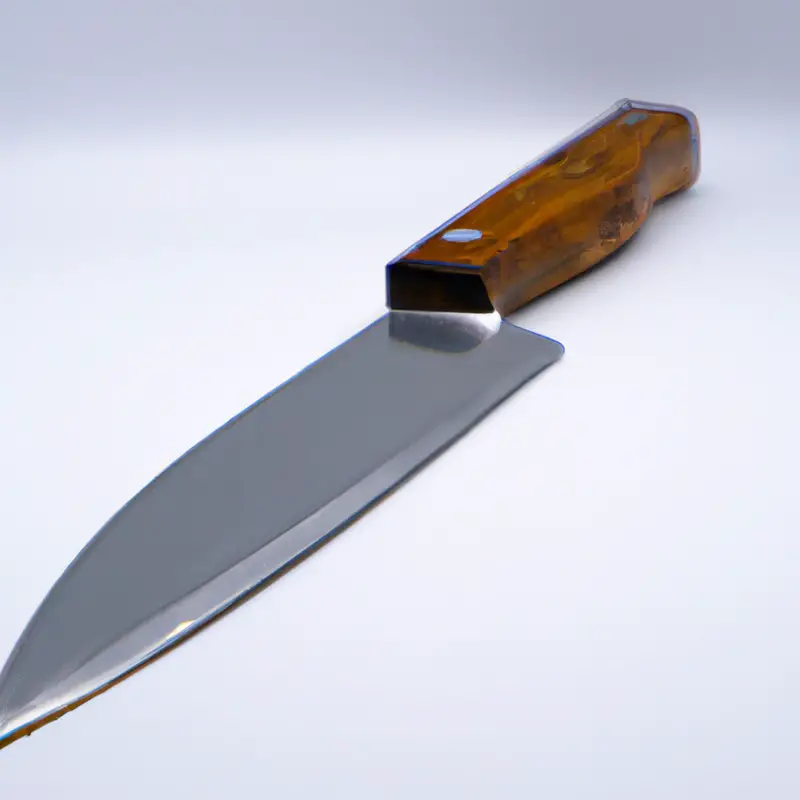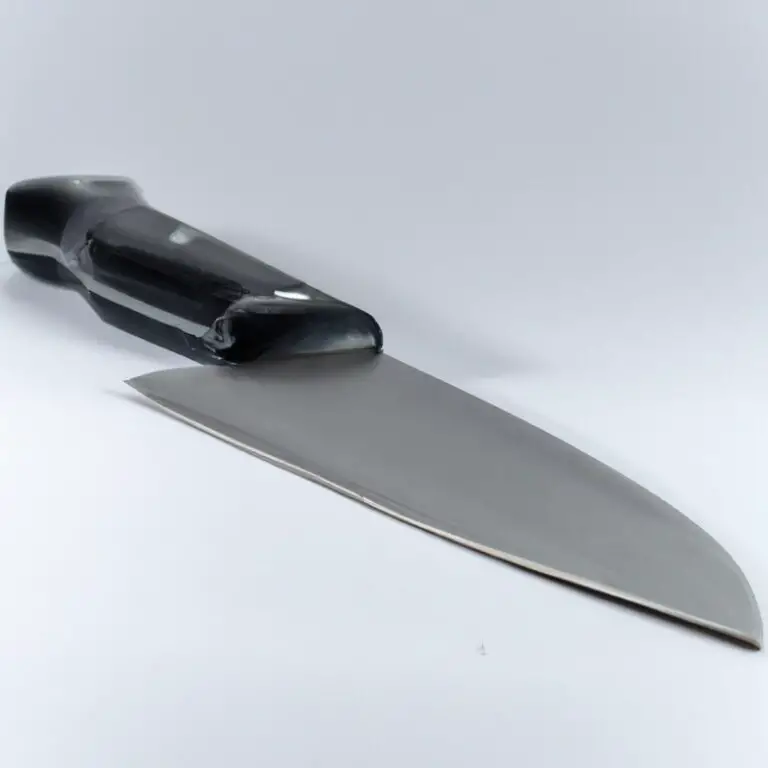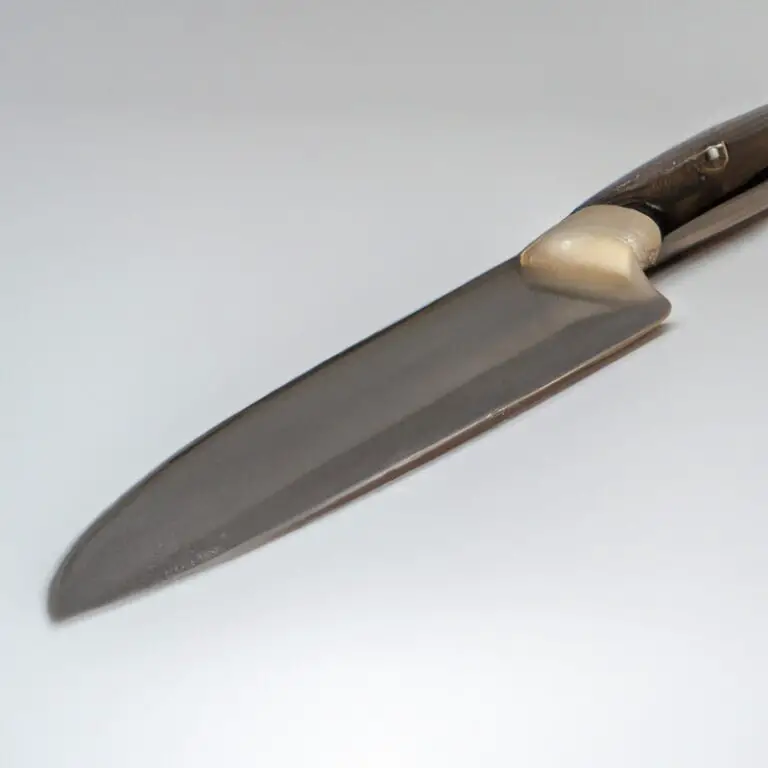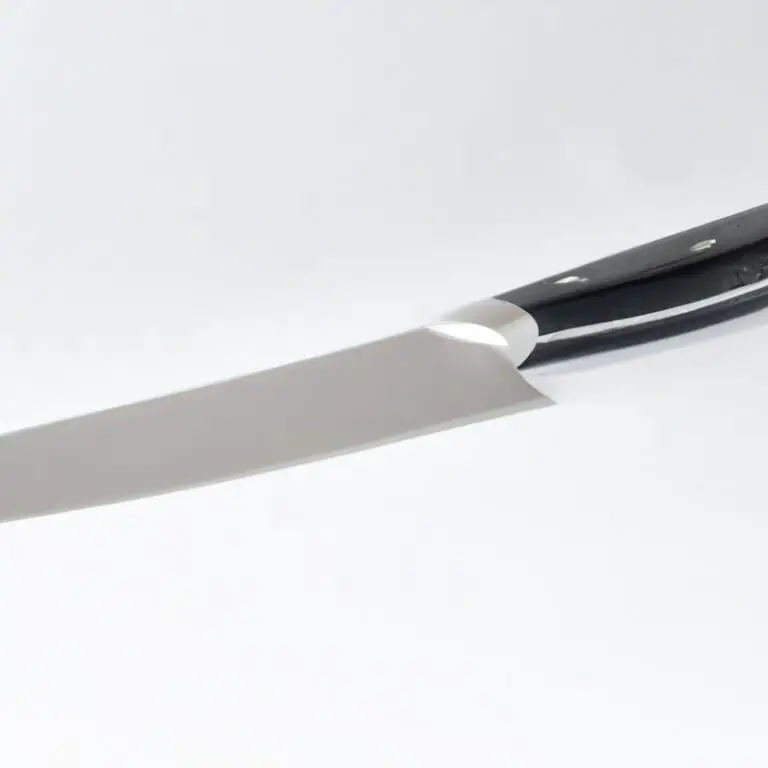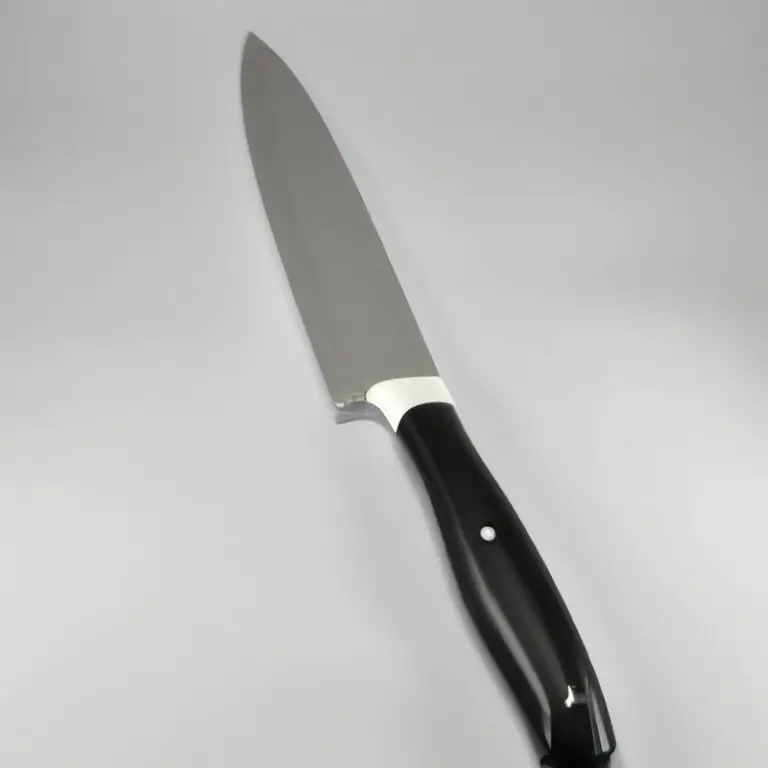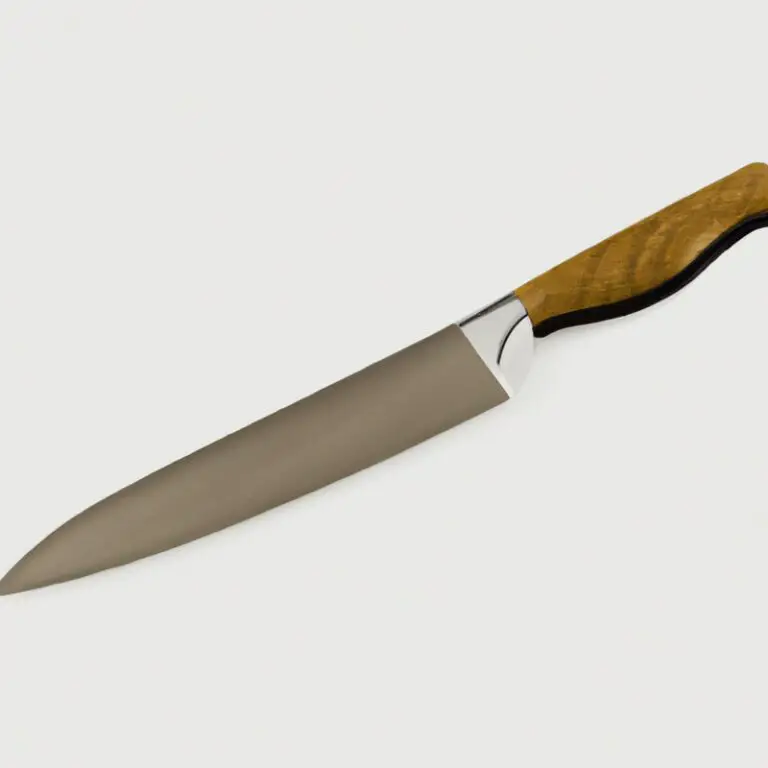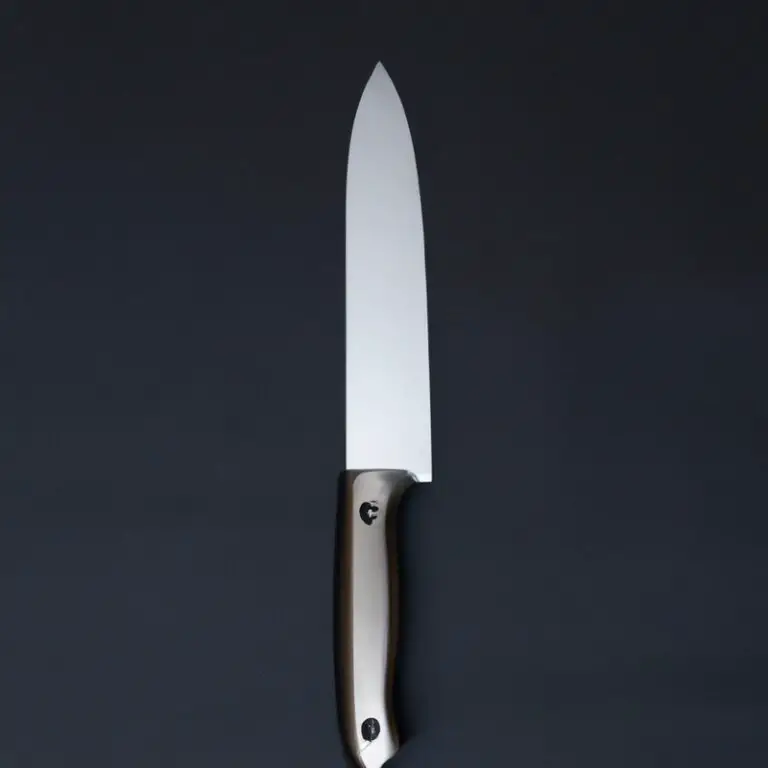What Are The Key Factors To Consider When Buying a Chef Knife?
Key Takeaways:
- Look for a chef knife made of high-quality steel to ensure durability and easy maintenance.
- Consider the size and weight of the knife, choosing one that feels comfortable and balanced in your hand.
- Check the edge sharpness and angle, as well as the blade shape and thickness, to find a knife that suits your cutting style and needs.
- Don’t overlook the handle material and grip, which can impact your comfort and control while using the knife.
As a chef, the most important tool in your arsenal is your trusty chef knife. But with so many options on the market, choosing the right one can be daunting.
You need to consider factors like blade material, handle design, blade shape, size, bolster, tang, maintenance, budget, and ergonomics.
Don’t worry, though – I’ve got you covered. In this article, I’ll take you through each of these factors, explaining what to look for and how to make sure you end up with the perfect chef knife for your kitchen.
| Factors | Description |
|---|---|
| Blade Material | The type of steel used in the blade. High carbon stainless steel is a popular choice as it is durable and rust-resistant. |
| Blade Length | The length of the blade determines its versatility. A 8-10 inch blade is typically used for slicing, chopping, and mincing. |
| Handle Material | The material of the handle affects the comfort and control of the knife. Common materials include wood, plastic, and composite. |
| Weight and Balance | The balance of the knife should be comfortable and facilitate the motion of chopping without causing strain on the wrist or hand. |
| Brand and Price | The brand of the knife may be an important consideration for some buyers, as well as the price range they are willing to purchase in. |
Understanding the Different Types of Chef Knives for Your Cooking Needs
When it comes to chef knives, there are several types to choose from, each with its own unique purpose and features to suit different cooking needs. The most common types of chef knives include the following:
- Gyuto – a versatile, all-purpose Japanese knife that is great for chopping, slicing, and dicing.
- Santoku – another popular Japanese knife that is similar to the Gyuto but has a shorter blade and a unique shape that allows for a rocking motion.
- Chef’s knife – a classic, Western-style knife that is great for chopping, mincing, and slicing.
- Paring knife – a small knife used for detailed work such as peeling and trimming.
- Bread knife – a serrated knife that is perfect for slicing through crusty bread without squishing it.
It’s important to choose a chef knife that suits your cooking needs and preferences. Consider the size, weight, balance, and handle design when making your selection.
Additionally, make sure to invest in a high-quality knife made from durable materials, such as high-carbon stainless steel, to ensure longevity and a great cutting experience.
Blade Material: What Makes the Difference in Your Cutting Experience?
The blade material is one of the vital factors that make a difference in your cutting experience. Most chef knife blades are made of stainless steel or high-carbon steel.
Stainless steel is more resistant to rust and corrosion, while high-carbon steel can hold a sharper edge for longer.
However, high-carbon steel requires more maintenance to prevent rust. Damascus steel is also a popular choice for its durability and beautiful patterned texture.
Ceramic blades are lightweight and stay sharp for a long time, but they are fragile and should only be used on soft foods.
When selecting a blade material, consider your cutting style, maintenance preferences, and budget. A high-quality blade material will ensure a smoother and more efficient cutting experience.
Handle Design: Finding Comfort and Control in Your Chef Knife
The handle design of a chef knife plays a crucial role in providing comfort and control during use. A well-designed handle should fit comfortably in your hand, provide a secure grip, and allow you to maneuver the blade easily.
Handles can be made from a variety of materials such as wood, plastic, metal, or composite materials.
It’s important to consider the material, shape, and size of the handle to ensure a comfortable and secure grip. A handle that is too large or too small can cause discomfort or lead to accidents, while a poorly designed grip can slip during use.
Look for a handle that balances comfort and control, allowing you to chop, slice, and dice with ease.
Keep in mind that different handle designs work better for different cutting styles and hand sizes. Try handling the knife before purchasing it to ensure a comfortable and secure grip.
A good handle design is essential for a comfortable and safe cutting experience, so be sure to give it the attention it deserves when choosing your chef knife.
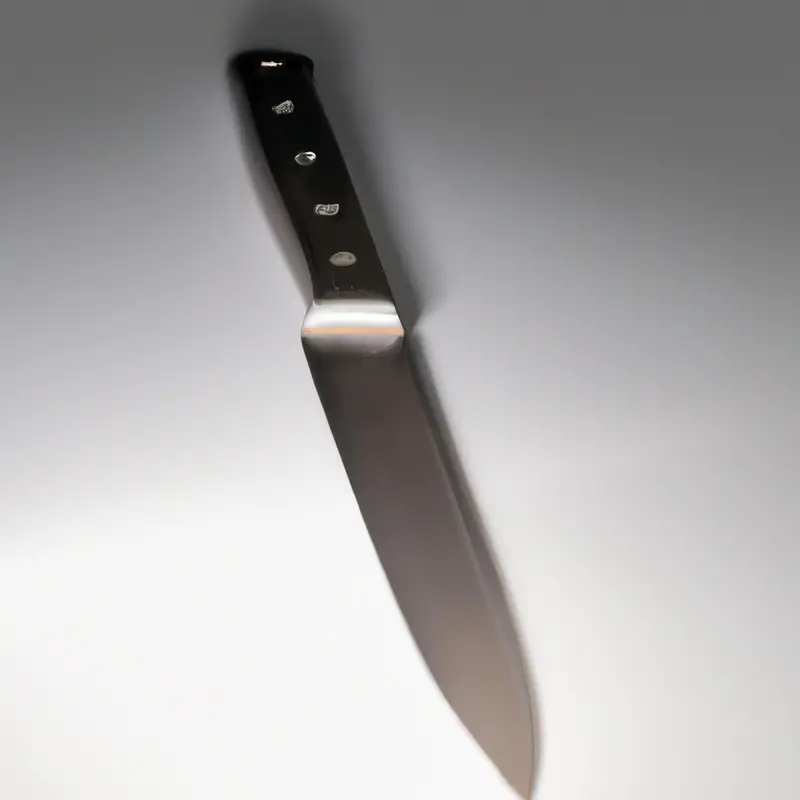
Blade Shape: Choosing the Right Edge for Your Cutting Style
The blade shape is an important factor to consider when choosing a chef knife that fits your cutting style. A chef knife’s edge has various designs, including the sharpness, curve, and thickness.
A thin, narrow blade is ideal for slicing, while a wider blade is better suited for chopping and dicing.
The curve of the blade will also affect its handling and versatility. A larger curve allows for a rocking motion, ideal for mincing herbs and garlic, while a flatter edge is well-suited for slicing.
Ultimately, choosing the right blade shape comes down to the user’s preference and comfort level.
Size Matters: Finding the Perfect Chef Knife Length
When it comes to chef knives, size is a crucial factor to consider. The perfect length of a chef knife varies based on personal preference and cutting needs.
Generally, the ideal length for a chef knife ranges from 8 to 10 inches.
A longer blade may be suitable for slicing larger ingredients, while a shorter blade is more maneuverable for intricate cuts and chopping. Ultimately, the perfect knife length is one that feels comfortable in your hand and allows you to cut with precision and control.
When selecting a chef knife, take the time to test out different lengths to find the perfect fit for your needs.
Bolster: The Purpose and Importance in Keeping Your Fingers Safe
The bolster is a thick metal junction between the blade and the handle of a chef knife. Its primary function is to protect your fingers from slipping onto the sharp edge of the blade while cutting.
A well-designed bolster provides balance, stability, and control while slicing, chopping, or dicing ingredients.
It also enhances the knife’s durability and strength. When buying a chef knife, choose a bolster that fits your grip and offers proper protection.
A full bolster covers the entire length of the blade, while a half bolster covers only the lower portion.
A no-bolster option is also available, but it provides less protection. Consider your cutting style, frequency of use, and comfort level while selecting a bolstered chef knife.
A top-quality chef knife with a sturdy bolster will last longer, improve your efficiency, and prevent accidents in the kitchen.
Full vs. Partial Tang: The Impact on Durability and Balance
The tang is the part of the blade that extends into the handle of a chef knife, providing balance and stability to the knife. Full tang knives have a blade that extends all the way down to the end of the handle, while partial tang knives only have a portion of the blade extending into the handle.
Full tang knives are generally considered to be more durable and well-balanced than partial tang knives.
The full tang provides weight to the handle, making the knife easier to control and maneuver. Partial tang knives may be lighter and more agile, but they may lack the durability and balance of a full tang knife.
If you are looking for a knife that is built to last and provides optimal balance, a full tang knife may be the best choice.
However, if you prioritize agility and speed over durability, a partial tang knife may be a better fit for you. It ultimately comes down to your personal preferences and needs in the kitchen.
Maintenance and Care: Protecting Your Investment and Ensuring Longevity
To ensure your chef knife’s longevity, proper maintenance and care are essential. Here are some tips to protect your investment:
- Clean your knife after every use.
- Hand wash and dry your chef knife with a clean cloth.
- Use a honing steel to align the blade after every use.
- Sharpen your knife at least once or twice a year.
- Store your chef knife in a knife block or sheath to prevent damage to the blade.
By following these simple steps, you can ensure that your chef knife stays in excellent condition and lasts for years to come. Remember that taking care of your knife is an investment in your cooking abilities and should not be overlooked.
Budget Considerations: Finding the Right Balance Between Quality and Price
When you’re in the market for a chef knife, it’s essential to find the right balance between quality and price. You don’t want to overspend on a knife that doesn’t perform up to your standards, but you also don’t want to skimp on quality and end up with a knife that doesn’t meet your needs.
One way to strike a balance is to determine your budget before you start shopping.
Take into consideration how much you cook and how often you use a chef knife. A professional chef who uses the knife day in and day out may want to invest in a more expensive option, while a home cook who only uses the knife occasionally can opt for a lower-priced option.
It’s also important to research and compare different brands and models.
Don’t just look at the price tag, but also consider the quality of the materials used, the design, and the overall reputation of the manufacturer. Remember, a chef knife is an investment in your kitchen, so it’s essential to find the right balance between quality and price.
With a little research and careful consideration, you can find a chef knife that fits both your needs and budget.
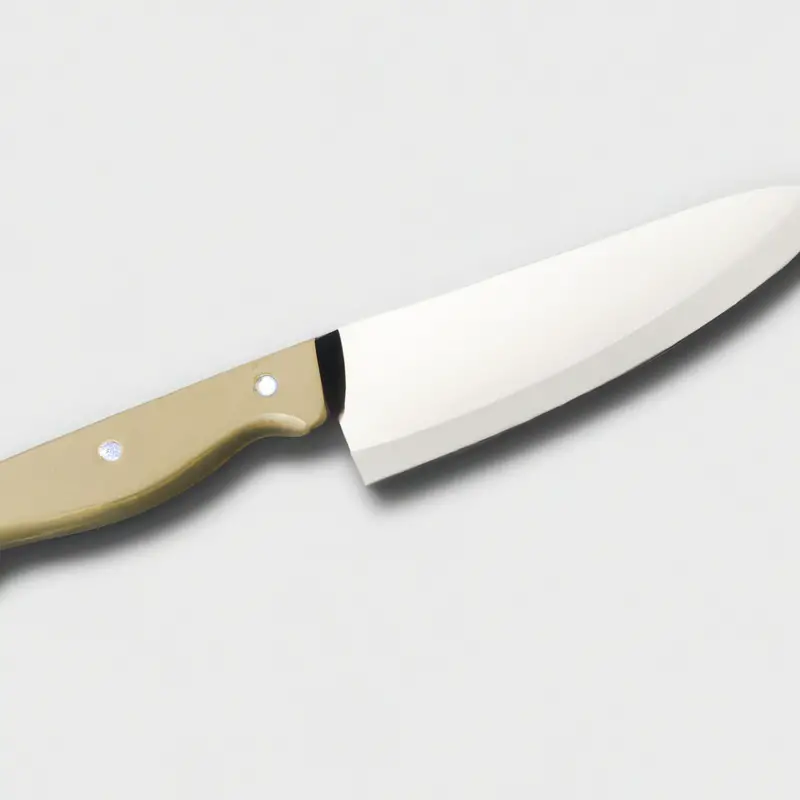
Ergonomics: Why the Right Knife is Essential for Your Safety and Comfort in the Kitchen
Ergonomics is a crucial factor to consider when selecting a chef knife. The right knife should fit comfortably in your hand and provide you with control and balance during use.
Using an improperly balanced or sized knife can lead to discomfort, fatigue, and even injury.
When choosing a chef knife, prioritize ergonomics to ensure your safety and comfort in the kitchen.
Final Verdict
To conclude, purchasing a chef knife that meets your cooking needs can be a daunting task, but by considering the key factors discussed in this article, you can make an informed decision and invest in a knife that will serve you well for years to come. Remember that blade material, handle design, blade shape, size, bolster, tang, maintenance, budget, and ergonomics are all important factors to consider when choosing a chef knife.
By taking the time to research and select the right knife, you’ll have greater precision and comfort in the kitchen.
Always remember to maintain and care for your knife to ensure its longevity, and invest in a knife that strikes the perfect balance between quality and price. With the right chef knife in hand, you can elevate your culinary skills and bring your cooking experience to greater heights.

